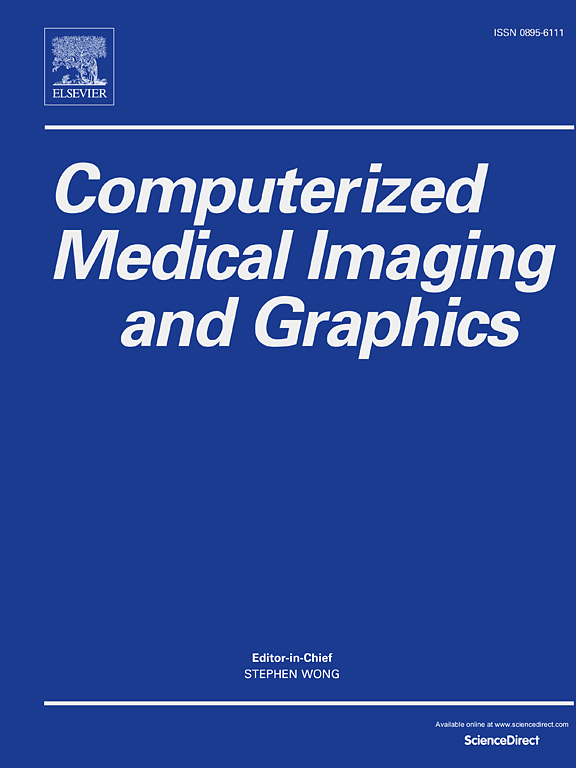Subtraction-free artifact-aware digital subtraction angiography image generation for head and neck vessels from motion data
IF 5.4
2区 医学
Q1 ENGINEERING, BIOMEDICAL
Computerized Medical Imaging and Graphics
Pub Date : 2025-02-18
DOI:10.1016/j.compmedimag.2025.102512
引用次数: 0
Abstract
Digital subtraction angiography (DSA) is an essential diagnostic tool for analyzing and diagnosing vascular diseases. However, DSA imaging techniques based on subtraction are prone to artifacts due to misalignments between mask and contrast images caused by inevitable patient movements, hindering accurate vessel identification and surgical treatment. While various registration-based algorithms aim to correct these misalignments, they often fall short in efficiency and effectiveness. Recent deep learning (DL)-based studies aim to generate synthetic DSA images directly from contrast images, free of subtraction. However, these methods typically require clean, motion-free training data, which is challenging to acquire in clinical settings. As a result, existing DSA images often contain motion-affected artifacts, complicating the development of models for generating artifact-free images. In this work, we propose an innovative Artifact-aware DSA image generation method (AaDSA) that utilizes solely motion data to produce artifact-free DSA images without subtraction. Our method employs a Gradient Field Transformation (GFT)-based technique to create an artifact mask that identifies artifact regions in DSA images with minimal manual annotation. This artifact mask guides the training of the AaDSA model, allowing it to bypass the adverse effects of artifact regions during model training. During inference, the AaDSA model can automatically generate artifact-free DSA images from single contrast images without any human intervention. Experimental results on a real head-and-neck DSA dataset show that our approach significantly outperforms state-of-the-art methods, highlighting its potential for clinical use.
求助全文
约1分钟内获得全文
求助全文
来源期刊
CiteScore
10.70
自引率
3.50%
发文量
71
审稿时长
26 days
期刊介绍:
The purpose of the journal Computerized Medical Imaging and Graphics is to act as a source for the exchange of research results concerning algorithmic advances, development, and application of digital imaging in disease detection, diagnosis, intervention, prevention, precision medicine, and population health. Included in the journal will be articles on novel computerized imaging or visualization techniques, including artificial intelligence and machine learning, augmented reality for surgical planning and guidance, big biomedical data visualization, computer-aided diagnosis, computerized-robotic surgery, image-guided therapy, imaging scanning and reconstruction, mobile and tele-imaging, radiomics, and imaging integration and modeling with other information relevant to digital health. The types of biomedical imaging include: magnetic resonance, computed tomography, ultrasound, nuclear medicine, X-ray, microwave, optical and multi-photon microscopy, video and sensory imaging, and the convergence of biomedical images with other non-imaging datasets.

 求助内容:
求助内容: 应助结果提醒方式:
应助结果提醒方式:


